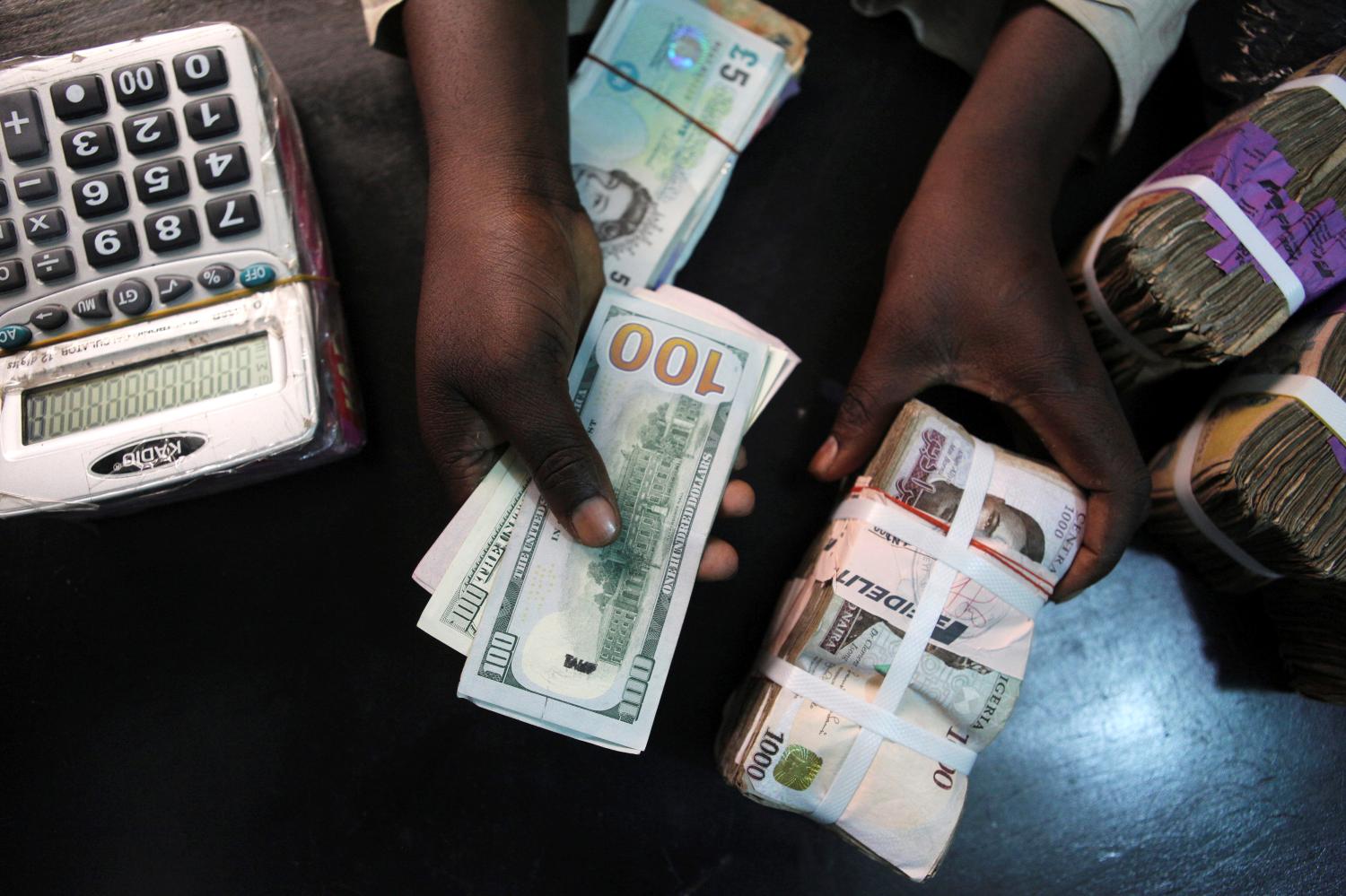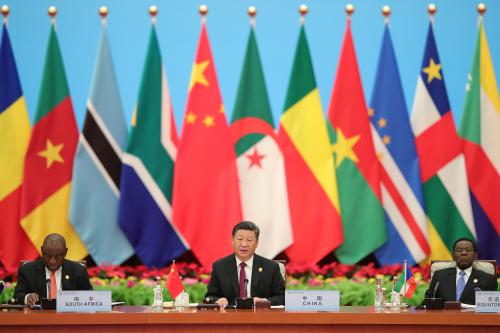SUMMARY
Concern is increasing about the prospect of a new sovereign debt crisis in countries across sub-Saharan Africa.1 The previous debt crisis of the 1990s is still fresh. It has only been 14 years since officials from major creditor countries (a group known as the Paris Club)2 and multilaterals adopted the ambitious Multilateral Debt Relief Initiative (MDRI) for outright forgiveness of debt owed by a group of 36 low-income poor countries.3 The majority of these countries, 29, in fact, were African. The massive debt relief was conditioned on sound economic management and poverty reduction strategies.
The MDRI was the logical advancement of a variety of initiatives for debt relief, the most prominent of which was the Heavily Indebted Poor Countries (HIPC) initiative instituted by the International Monetary Fund (IMF) and World Bank in 1996 to address debt overhang in the poorest countries of the world. African countries had been borrowing into the 1980s, which led to an increasing accumulation of debt that became unsustainable.
These debt relief initiatives, including MDRI, had good intentions and outcomes. Through unloading of the debt overhang, infusion of new loans, improved policies, along with enhanced investment incentives, the overall expectation was that there would be positive economic and social development outcomes. Indeed, for about a decade, most countries witnessed economic upturns and reduced debt burdens. The median public debt level (as a percent of GDP) for sub-Saharan Africa declined to about 31 percent in 2012, far below the levels leading up to the HIPC initiative.
There were concerns associated with the debt relief program, notably the issue of moral hazard (Easterly, 2009). The worry was that, moving forward, this blanket debt forgiveness would distort incentives for weak governments to over-borrow and then over-invest, detracting from economic performance. These concerns are consistent with the belief that poor governance and fiscal indiscipline contributed to the debt overhang and that, unless there are genuine systemic reforms, history will repeat itself.
So, as the region once again faces massive debt, is history repeating or is this time different?
A decade and half after the massive debt forgiveness, African debt is in the global news again. Since 2013, the region’s debt has been on the rise, with the median debt ratio as percent of GDP increasing from 31 percent in 2012 to 53 percent in 2017. This growing public indebtedness is fueled not only by domestic, but also external debt, as both categories have risen by about 10 percentage points. Because of the rapid increase in debt burden over recent years, about one-third of the countries in sub-Saharan Africa are either in or at high risk of debt distress, including the majority of countries that benefited from debt relief in the 1990s.4 Total debt and external debt for these countries is estimated at $160 billion and $90 billion, respectively. To assess whether this time is different, it is important to examine the drivers of this debt buildup, the composition of debt, and its design features.
We find that several factors contributed to the debt buildup beginning around 2008 and accelerating after 2014, particularly the global financial crisis and the 2014 terms-of-trade shock. In response to these shocks, economic activity declined and government revenues fell. Primary fiscal balances, which were positive through 2007, turned negative after 2008, partly in response to policy measures to support economic activity. Meanwhile, the low interest rate environment in the aftermath of the global financial crisis and investors’ search for yield facilitated access to capital markets for many countries for the first time. Large infrastructure needs, amid rapidly growing populations, also led several countries to issue debt to fill the financing gaps. Additional contributing factors included exchange rate depreciations and, in a few countries, poor governance and corruption.
Our analysis suggests that, while another systemic sovereign debt crisis is not imminent, the rapid pace of the debt increase, as well as important changes in its structure and design features compared with that of the HIPC/MDRI era are concerning. Indeed, median debt as percent of GDP in the region has increased by a staggering 5 percentage points annually between 2014 and 2016. This pace of increase is not sustainable. Moreover, external and foreign-currency denominated debt is predominant, accounting for about 60 percent of total debt on average, exposing these countries to swings in global market conditions. The share of commercial debt is rising too, in part because of eurobonds issued by several countries. In this respect, the current debt build up is different than what occurred during the HIPC/MDRI era. This trend suggests that debt sustainably thresholds are now lower, as already evidenced by relatively high debt servicing costs. Finally, the credit base is now more diffuse. While the plurality of creditors allows for a diversification of funding partners, it makes eventual debt resolution mechanisms more complex.
The debate around another debt crisis less than two decades after major debt relief, serves as reminder that progress has not been sufficient to address the structural issues that constrain sustainable development financing in Africa. Notably, domestic saving rates have remained low at around 15 percent of GDP, on average, since early 2000, despite various initiatives over the past two decades to improve tax revenue collection, combat illicit flows, address profit shifting by multilateral corporations, and strengthen governance in natural resource management. Meanwhile, the financing needs for infrastructure are expanding with rapid population growth and urbanization, and multilateral development banks’ financing in that sector has been meager.
Even though a systemic sovereign debt crisis is not imminent, governments and their development partners should take the necessary steps to address any vulnerabilities and contain the risks of a systemic crisis. Governments should also ensure that debt management frameworks and strategies are updated to reflect the new structure of the debt, especially greater financial market risks, and take bold steps to strengthen governance around tax revenue collection. Enhancing efficiency in tax revenue collection could mobilize up to $110 billion annually over the next five years and reduce the need for debt financing (Coulibaly and Gandhi, 2018). According to a study by the International Monetary Fund, developing countries lose about 1.3 percent of GDP in revenues to companies shifting profits to low-tax locations (IMF, 2019). Stronger international cooperation around corporate tax rules and enforcement will help raise tax revenues further.
Moreover, concerted international efforts and collaboration to combat illicit capital flows and repatriate stolen funds will go a long way to alleviate development financing needs. Development banks also have an important role to play in infrastructure financing, yet multilateral banks financed only about 3 percent of region’s infrastructure between 2012 and 2016 (AfDB, 2018). Development banks should be adequately capitalized so that they can leverage that capital to play a bigger role in infrastructure financing. Their involvement will alleviate pressures on national government budgets and the buildup of debt. Finally, it is imperative that countries accelerate the process of developing financial sectors that are deep, dynamic, and inclusive.
-
Footnotes
- This policy brief covers 44 countries in sub-Saharan Africa based on IMF country classifications excluding Eritrea. Sub-Saharan Africa and Africa are used interchangeably in the text to refer to this group of countries.
- The Paris Club is a group of 22 permanent members representing bilateral creditors who coordinate on debt resolution problems for developing countries. http://www.clubdeparis.org/
- Eligible countries included those who had completed the HIPC program or had per capita income below US$380 in 2006. https://www.imf.org/external/np/exr/mdri/eng/mdrians.htm#q01
- Based on debt sustainability analysis (DSA) of the IMF and World Bank. Six countries are in debt distress: Mozambique, the Gambia; Republic of Congo; São Tomé and Príncipe; South Sudan; Zimbabwe. No recent DSA is available for Republic of Congo but the country has been classified as ‘In debt distress’ in recent IMF publications after missing several debt payments (Macroeconomic developments and prospects in low-income countries 2018).







